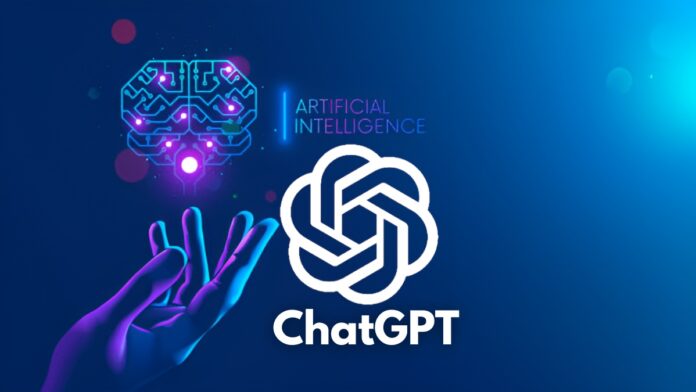In the fast-evolving world of cybersecurity, staying ahead of potential threats and vulnerabilities is an ongoing challenge. With increasing sophistication in cyber-attacks, traditional methods of vulnerability detection are being tested, often struggling to keep up with the dynamic landscape. However, with the rise of AI technologies, particularly OpenAI’s ChatGPT, a new approach to vulnerability detection is gaining traction.
How AI is Revolutionizing Vulnerability Detection
Artificial intelligence (AI) and machine learning (ML) have already proven their worth in various sectors, and their application in cybersecurity is expanding rapidly. In particular, ChatGPT, a language model created by OpenAI, is now being explored as a tool to enhance vulnerability detection, offering significant potential in automating tasks, improving efficiency, and identifying new attack vectors.
By analyzing vast amounts of data, ChatGPT can assist in identifying vulnerabilities in code, configurations, and networks that might otherwise go unnoticed. Unlike traditional methods, which often rely on predefined signatures or rules, ChatGPT uses deep learning to understand context, meaning it can detect novel vulnerabilities or anomalies that do not fit into predefined patterns.
Why ChatGPT is Ideal for Vulnerability Detection
There are several reasons why ChatGPT is particularly well-suited for this task:
- Contextual Understanding: ChatGPT’s ability to understand and generate human-like text allows it to analyze code and configurations with contextual awareness, identifying vulnerabilities that may arise from complex interactions between different components.
- Automation: With its language processing capabilities, ChatGPT can automate large portions of the vulnerability detection process, reducing the workload for cybersecurity teams. Tasks such as log analysis, scanning codebases, and even testing for known vulnerabilities can be accelerated and made more efficient.
- Learning from Data: One of the key strengths of ChatGPT is its ability to learn from vast datasets. In the context of cybersecurity, this means ChatGPT can be trained on data from previous incidents, vulnerabilities, and attack patterns, enabling it to predict and detect emerging threats.
- Collaboration with Human Experts: ChatGPT doesn’t replace cybersecurity professionals but rather enhances their capabilities. By handling repetitive tasks and analyzing large volumes of data, it frees up experts to focus on more critical decision-making and complex problem-solving.
Practical Applications of ChatGPT in Vulnerability Detection
- Code Review: ChatGPT can be integrated into development pipelines to review code for security flaws. Its ability to process natural language and complex syntax means it can understand the intent behind the code and spot potential vulnerabilities, such as injection attacks, misconfigurations, or buffer overflows.
- Penetration Testing Support: ChatGPT can assist penetration testers by automating the scanning of systems for common vulnerabilities, generating potential attack vectors, and suggesting remediation strategies based on the system’s configuration and known weaknesses.
- Threat Intelligence: By analyzing threat intelligence feeds and security bulletins, ChatGPT can summarize critical vulnerabilities, offer insights on emerging threats, and recommend immediate actions, keeping organizations informed and prepared.
- Security Awareness Training: ChatGPT can also be employed to simulate phishing attacks or provide real-time guidance on recognizing social engineering attempts, helping organizations bolster their human firewall.
Limitations and Challenges
While ChatGPT holds great promise in vulnerability detection, it is not without limitations. AI models, including ChatGPT, can sometimes produce inaccurate results or overlook certain vulnerabilities if not trained with the right datasets. Additionally, attackers could potentially leverage the same technology to develop more sophisticated attacks, highlighting the ongoing arms race between security professionals and cybercriminals.
Moreover, the ethical use of AI in cybersecurity is crucial. Without proper oversight, the reliance on AI models could lead to unintended consequences, such as false positives or negatives, which could impact an organization’s ability to respond effectively to threats.
The Future of AI in Cybersecurity
The integration of ChatGPT into vulnerability detection is a testament to how AI is reshaping the cybersecurity landscape. As the technology matures, we can expect it to become an invaluable tool in not only detecting vulnerabilities but also in predicting potential threats before they materialize.
For cybersecurity professionals, the key will be in striking the right balance between automation and human expertise. AI-powered tools like ChatGPT are not a replacement for skilled security analysts, but a powerful aid that can enhance their efficiency and precision in safeguarding digital assets.
By harnessing the capabilities of AI, organizations can significantly strengthen their security posture, ensuring they are better prepared to detect and mitigate vulnerabilities in an increasingly complex threat environment.
This blog captures the essence of how ChatGPT can be leveraged in vulnerability detection and highlights the potential, benefits, and challenges of using AI in cybersecurity.


Leave a Reply